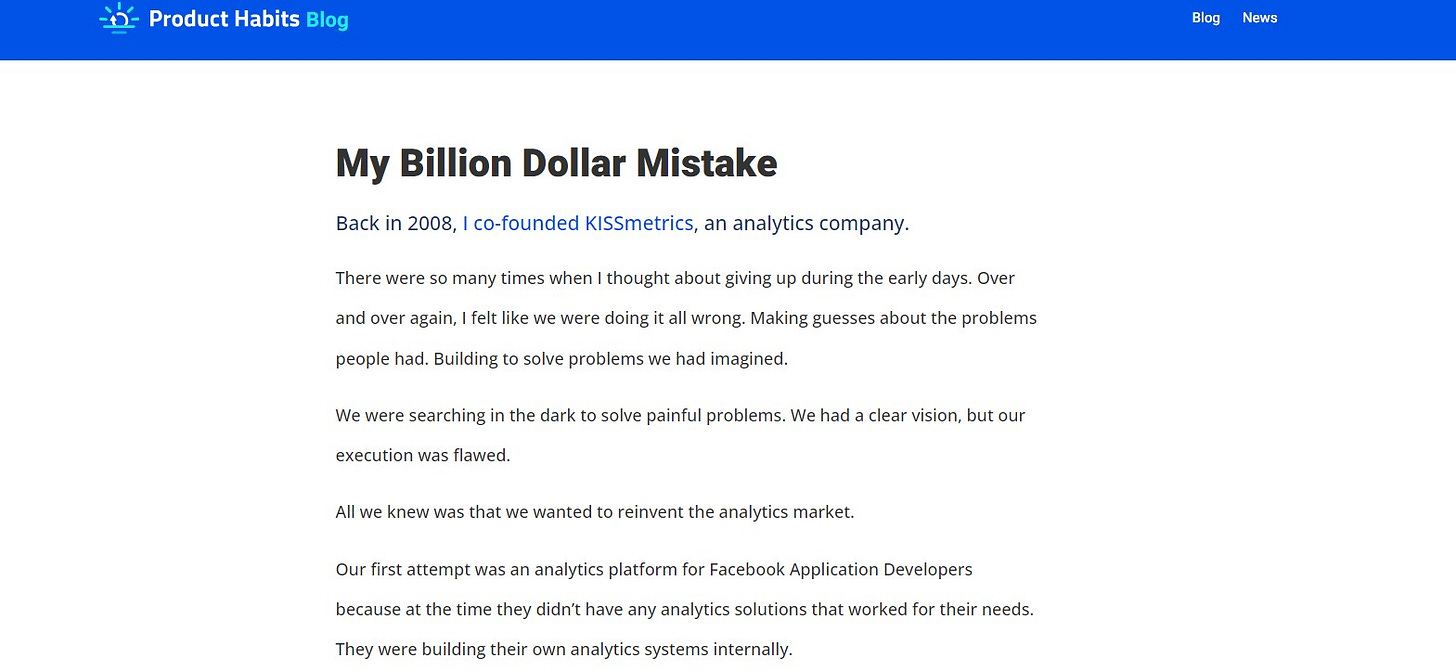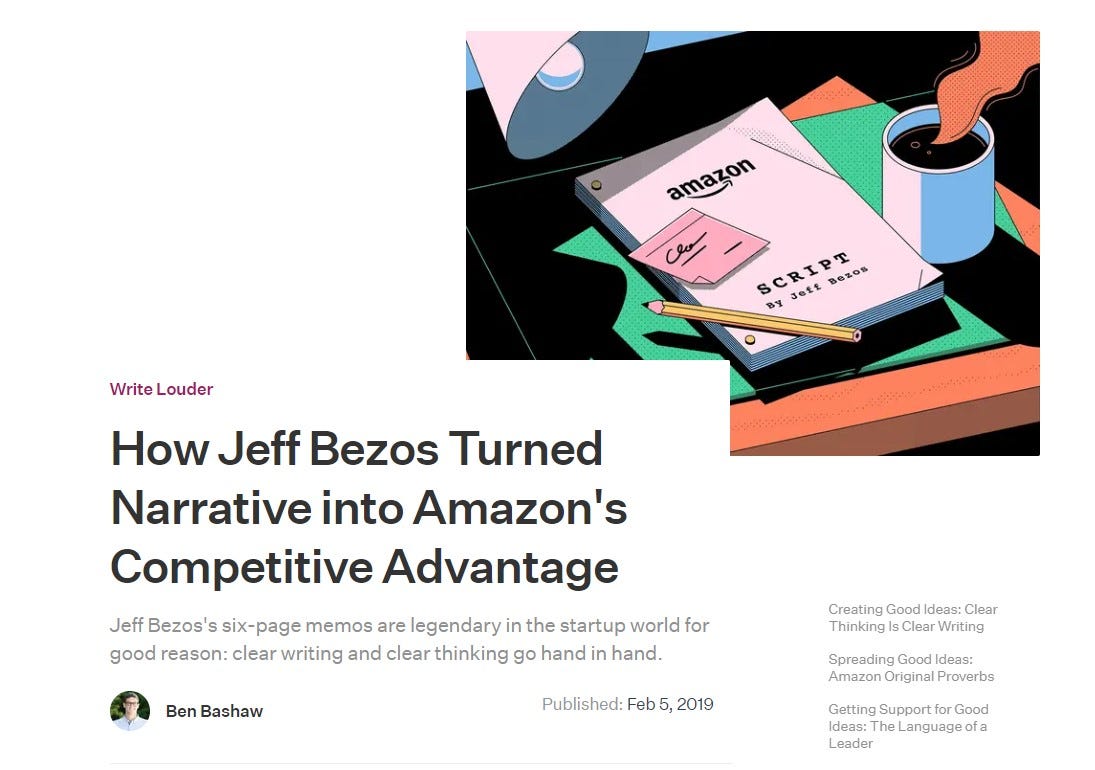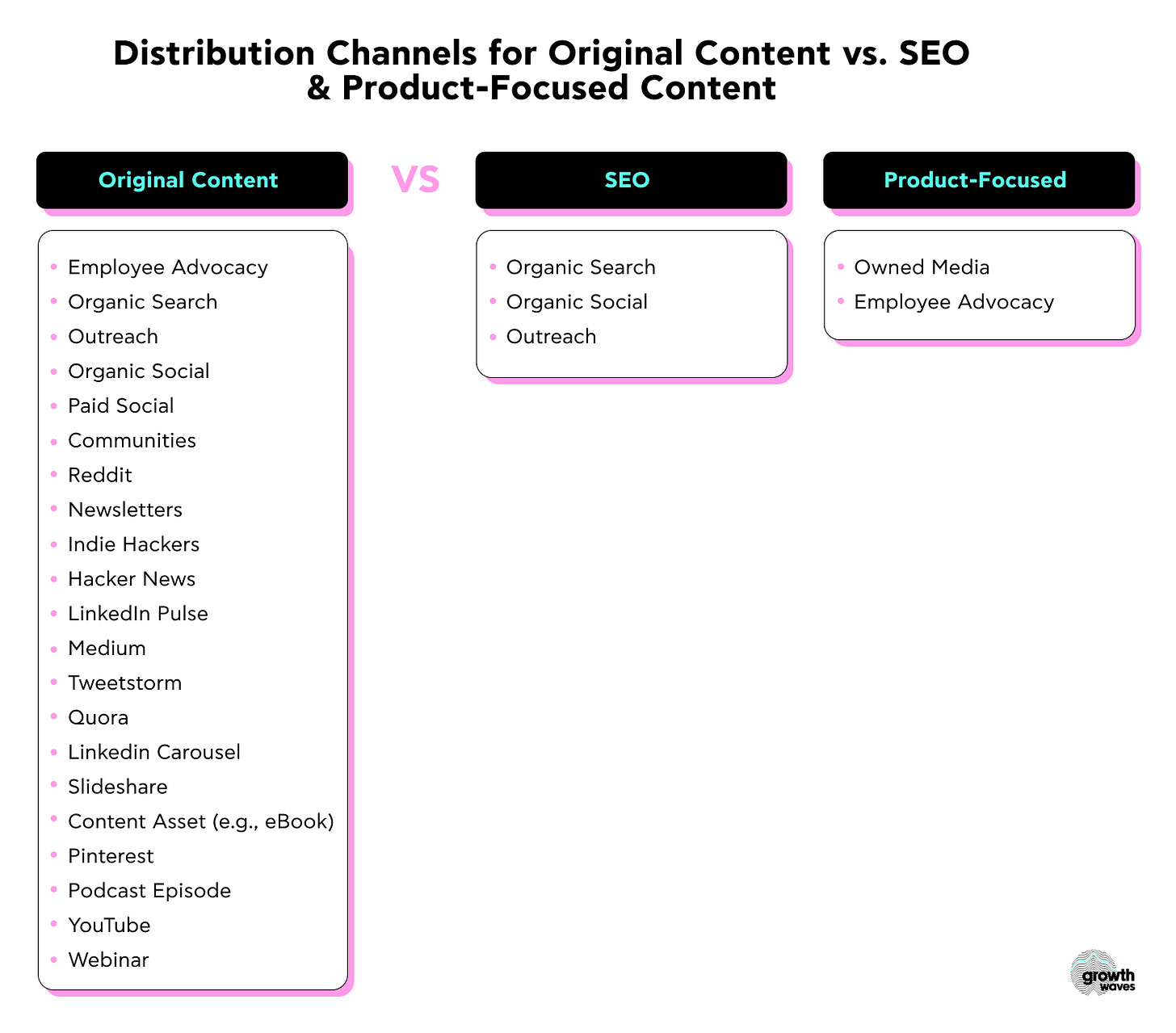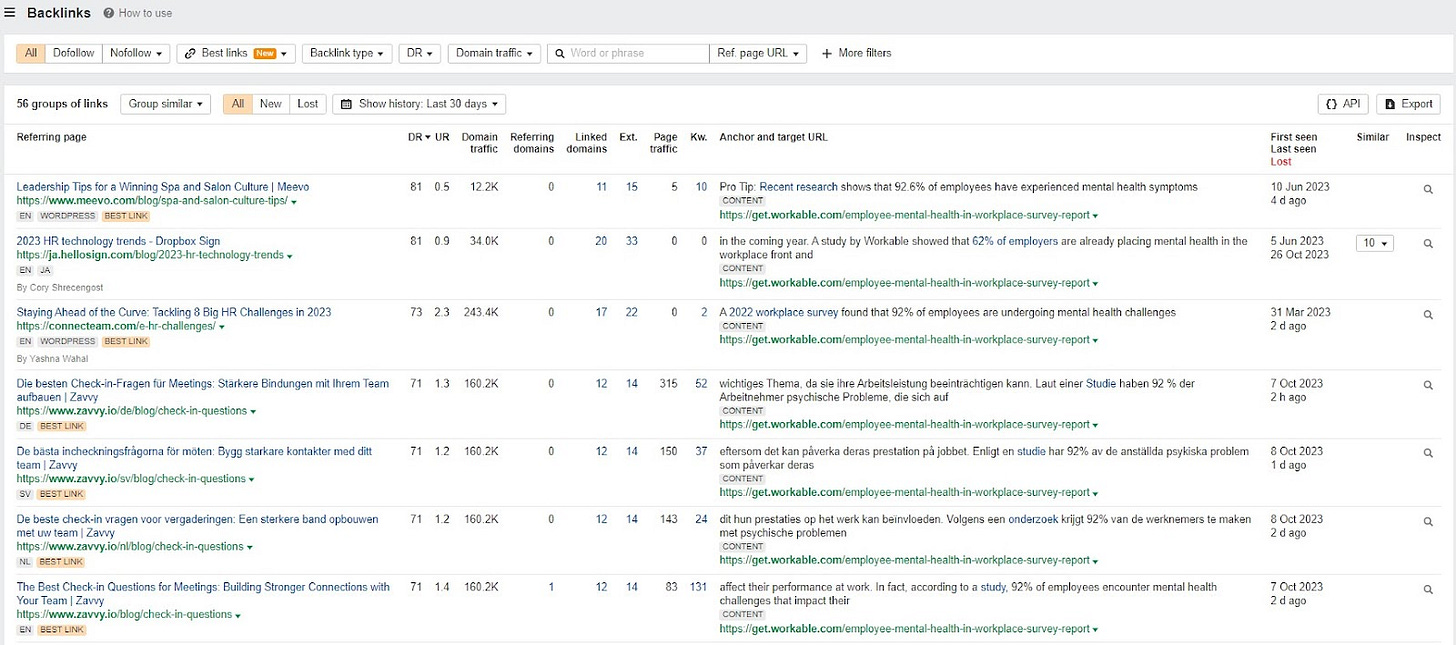Original Content (framework)
The original content framework: How to stand out in a sea of AI-generated content
👋 Hey, I’m George Chasiotis. Welcome to GrowthWaves, your weekly dose of B2B growth insights—featuring powerful case studies, emerging trends, and unconventional strategies you won’t find anywhere else.
I’m in my Airbnb in Belgrade (Serbia) and thinking of what the next note of GrowthWaves should be about.
“Do enough people know about this?” I wonder.
“I don’t think so; I think many people (still) don’t have a framework on how to approach original content,” my internal voice replies.
“Yep, I need to write about that,” I conclude.
And so, what you’ll read today is the outcome of this internal dialogue, along with years of effort and experimentation on content marketing.
What I’ll offer you isn’t a step-by-step process or a detailed how-to.
Instead, you’ll get a framework on how to approach what I call ‘Original Content.’
And why is that so important (especially right now)?
Because with the introduction of AI, both the quality bar and the barrier to entry for text-based content hit rock bottom.
Simply put:
More content = More competition = More difficulty in standing out
The framework below will help you stand out and make a difference.
Not in one day or two, but over a long period of time, after a consistent publishing schedule and as part of a holistic content marketing strategy.
The framework
Let’s cut right to the chase.
What is meant by original content?
While the interpretation of this conсept varies from case to case, I (and the whole team at Minuttia) see original content as something unique that demonstrates out-of-the-box thinking.
In other words, such content offers a perspective that hasn’t been voiced or shared before. It can be a piece presenting unique data, an original take on a certain topic, and so on.
Which content formats can help you achieve that?
Take a look.
As you can see, we have nine original content formats here.
Quite a lot of room for creativity.
However, there is a time and a place for each content format to play its role.
So, how do you know when to add original pieces to your content marketing strategy?
To answer this question, we need to look at a content marketing strategy through the following four dimensions:
Stage
Competition
Objectives
Distribution
Let me decipher them for you.
Dimension #1: Stage
First comes the Stage dimension, implying how content marketing would change as the company goes through different stages of growth.
Let’s examine how original content formats will apply to each of the three stages a SaaS or B2B company usually goes through.
Basically, the original content formats mentioned above match the function of each stage.
First, the formats for the Early Stage facilitate brand awareness.
The Product-Market Fit Stage means that your product has found its audience and that you have identified the best use cases for it.
So, you’ll need different content compared to the previous stage, as the Product-Market Fit Stage is far less uncertain than the Early Stage.
Finally, the Growth Stage means acceleration, and your task here is to produce content that proves value in a scalable way and continues to set you aside from your competitors.
Speaking about competitors, let me share a few words about the Competition dimension.
Dimension #2: Competition
Most companies heavily invest in SEO content as a part of their content marketing strategy.
And while there’s nothing wrong with that, the level of competition with SEO content is very high.
At the same time, those who invest in original content, although we can’t call them innovators or early adopters, still have more of a competitive edge, as most of their rivals don’t follow that path.
Now, let’s see where different original content formats stand when it comes to the third dimension—Content Marketing Objectives.
Dimension #3: Content Marketing Objectives
Below is the distribution of original content formats based on the following five content objectives we use at Minuttia.
Increase brand revenue
Educate & support
Generate revenue
Thought leadership
Amplification
Finally, let’s consider original content formats from the standpoint of the last dimension.
Dimension #4: Distribution
Regarding the Distribution dimension, original content can be shared through the following channels.
As you can see, you have quite a few choices here.
To compare, take a look at common distribution channels for SEO and product-focused content vs. original content.
So, we can see that original content fills in a rather big gap when it comes to distribution.
And, even though it shares some distribution channels with SEO content (social media and outreach), the success of these channels will differ significantly.
For instance?
SEO content shared via social media might not get as much engagement as an original content piece.
Consider the following post from Lemlist promoting their recent blog post—it managed to collect only a few reactions.

And here is a post with a data study.

Of course, this is just one example, and things can differ on a case-by-case basis.
Yet, it still shows (and our experience at Minuttia confirms it) that original content generally performs better on social media.
So, what conclusion can we draw from all this?
Original content is free from many limits that constrain, say, SEO content, which is not as effective in building thought leadership, requires high-cost upkeep, and the performance of which heavily relies on search algorithms.
Most importantly, original content helps you avoid the trap of commoditizing your content marketing strategy and keep your brand’s voice unique, given the ever-lowering quality bar caused by the spread of AI content.
Thus, the verdict for original content is clear—it’s no longer a choice but a necessity for a successful content strategy.
And, with the framework I shared, you now know where to start.
However, there’s one thing we haven’t covered—examples for each content format.
Let me share some with you.
Surveys
A survey is a piece of content that aims to gather information from a group of people through a set of questions targeting a specific topic.
Apart from offering a unique perspective, surveys offer the following benefits:
Showcasing your expertise
Serving as a linkable asset
Establishing your brand’s authority
An example?
Here’s a great one from Workable.
Example: Mental Health in the Workplace—2022 Worker Survey by Workable

Workable surveyed 1,300 people to understand how they viewed mental health at the workplace.
The goal was to investigate the state and level of stigmatization of mental health across different industries.
What’s notable about this survey?
Apart from covering a rather pressing topic, this content piece does it at a great scale, discussing the matter from the standpoint of professionals working in 14 different industries.
It’s also an example of a survey done right: aside from asking very targeted questions, the text includes direct quotes from respondents to confirm the data.
How great is it as a linkable asset?
This survey has collected 56 backlinks (as of March 12, 2024)—not bad, considering many are coming from websites related to Workable’s niche.
Note: To regard as original content, a survey doesn’t have to be of such a large scope. Here is an example of a collaboration report from Figma that surveyed 50+ participants and still was able to generate unique data.
Data Studies
A data study is a content format that tells a story by putting data and insights into a context, thus making complex information easier to understand.
The benefits of data studies are similar to those of surveys—you get to showcase your expertise and boost authority while also producing a linkable asset of high value.
The content piece below is a great example of that.
Example: Google Rewrites 61% of Page Title Tags [SEO Study] by Zyppy SEO

This data study from Zyppy SEO covers the analysis of 80,959 title tags across 2370 websites, revealing that Google has rewritten almost 61% of them.
The reason I chose this example is that, aside from sharing valuable insights through data storytelling, it also highlights Zyppy’s product capabilities, namely, its title tag analysis tool.
For this reason, we can assume that this content piece would serve the objective of revenue generation quite well.
Note: Data studies don’t have to be as extensive to count as original content. You can start with a simple case study of your customer.
Invented Concepts
An invented concept is an original content piece describing a methodology, framework, or process that carries a unique name and is exclusive to your brand and company.
This original content type is a solid choice if your goal is to establish yourself as a thought leader or even an innovator in your industry, as it shares something that hasn’t existed before (or viewed from this particular perspective).
Let’s take a look at an example.
Example: 10x Content by Rand Fishkin

This content piece describes 10x content—a concept invented by Rand Fishkin.
Just to brief you, 10x content is a content piece that is ten times better than the highest-ranking result for a specific keyword.
The article mentioned above is one of the resources that cover everything one needs to understand about the 10x content.
The concept caught on, by the way.
All top anchors referring pages used to link back to this article include the keyword 10x content.
The search term itself also caught on, with a search volume of 800 as of March 12, 2023, based on Ahrefs data.
Let’s move on to the next example.
Creative Analogies
A creative analogy is an original content piece comparing two or more concepts from a unique perspective.
Now, it can be a straightforward analogy or a form of simile comparing two entirely different concepts in order to create a new meaning.
Or, a creative analogy can be done with the purpose of shining a new light on something familiar, like in the example below.
Example: Calendly: The $4B DocuSign of Scheduling by Sacra

This article tells the story of Calendly’s evolution, likening it to DocuSign through a creative analogy.
Initially perceived as just a feature, Calendly ended up revolutionizing and attaining a dominant market share in scheduling, much like DocuSign did with e-signatures.
The creative analogy is the leitmotif of the article, from covering Calendly’s growth story compared to DocuSign’s to likening their strategies and attempting to predict Calendly’s future.
Let’s see what the next example has in store.
First-Person Narratives
A first-person narrative gives a personal take on the topic or covers a personal story or experience.
It can appear as a personal blog entry, but the goal is to share something pivotal—an important lesson or event.
The article below is a great example of such content.
Example: My Billion Dollar Mistake by Hiten Shah on Product Habits

In this content piece, Hiten Shah, the founder of KISSMetrics, tells the story of how making frequent changes and switching directions contributed to the company’s downfall.
However, this personal narrative was not created for the sole person of telling the story.
Hiten draws a few crucial conclusions, which other company founders can also find insightful, such as the importance of a consistent, customer-focused product development strategy.
Note: To make this content format work, make sure it resonates with your target audience.
Third-Person Narratives
A third-person narrative tells the story from the third person’s perspective, often without addressing the reader.
This original content type can be confused with SEO content.
However, its goal is not to rank in SERPs but to share something unique, like in the example below.
Example: How Jeff Bezos Turned Narrative into Amazon’s Competitive Advantage by Slab

This article tells the story of how Jeff Bezos approached writing (a.k.a. narrative) to help formulate a clear positioning and communication strategy for Amazon.
It’s a great content piece for Slab’s readers (it helps create a company’s knowledge base).
Since the article covers Amazon’s unique approach to meetings, narratively structured memos, and idea presentation, it is packed with useful recommendations for Slab’s target audience.
Let’s move on.
Contrarian Content
Contrarian content is an original content format offering a contrasting opinion to popular belief or concept.
You need to be very careful with this content format—it should really show that you know what you’re talking about.
Otherwise, you’re just clickbaiting the reader.
Here’s an example of how to approach it the right way.
Example: Your SEO Strategy Hurts Your Brand: Here’s Why by Minuttia

In this content piece on Minuttia’s blog, I investigated the hazards of focusing solely on SEO (which is often a norm for brands) and offered a different perspective—to view an SEO strategy in conjunction with broader branding goals.
To put it simply, I encourage the readers to take a more balanced approach that would integrate SEO and brand-building efforts.
And, I must say, they heard my appeal.
Some of the clients reached out to me saying they checked out this content piece and followed the Calendly link placed in it to book a call.
Note: With contrarian content, you need to be ready for criticism. Not all people will share your viewpoint, and you should be okay with that.
Network-Based Content
Network-based content is sourced from collaborations, interviews, etc., involving your network or community members.
Here, you have a lot of room for creativity—talks with other industry experts, webinars, podcasts, and so on.
Take a look at the example below.
Example: How ConvertKit Grew From $98k to $625k MRR by Doing 150 Webinars in 1 Year by Leadfeeder

This content piece tells a story of ConvertKit taking a creative approach to growth marketing through webinars.
To put it briefly, the company generated revenue by running webinars in collaboration with ConvertKit’s affiliates. However, the catch was not to sell but to provide genuine value, which ultimately worked for the company in terms of revenue.
For Leadfeeder, this content piece helps address a very specific audience—people who use partnership webinars.
As a CTA, Leadfeeder suggests its product to help potential clients analyze where the traffic to webinars comes from and pinpoint possible sales opportunities.
Trends & Events
Finally, original content can also cover recent trends or events.
The key here is to keep the coverage time- and industry-relevant.
The example below showcases what I mean perfectly.
Example: Loom, Zoom, Room by Loom

Here, Loom covers the story of Rippling, an HR and IT platform that used Loom’s presentation feature to pitch its product to an investor.
The deal ultimately closed with a $6.5 billion valuation.
Loom didn’t miss the chance to jump on the bandwagon with this article, as this deal presented an excellent opportunity to showcase the value of Loom’s product.
A very timely move, if you ask me. And this is exactly what this original content type is about.
Final thoughts
Given the increasing commoditization of content marketing, original content seems like a worthy investment to stand out from the crowd.
That said, it is not devoid of limitations.
It’s not as easy to scale as other content types, can be costly, and you may come across people who will question your work (e.g., with contrarian content).
But most importantly—it takes time for original content to pay off.
It really has to become a part of your company’s DNA to start making a difference.
Nevertheless, once it is an integral part of your content marketing strategy, combined with other content types, original content can play a pivotal role in helping you grow your brand and authority in your industry.
See you next week!









